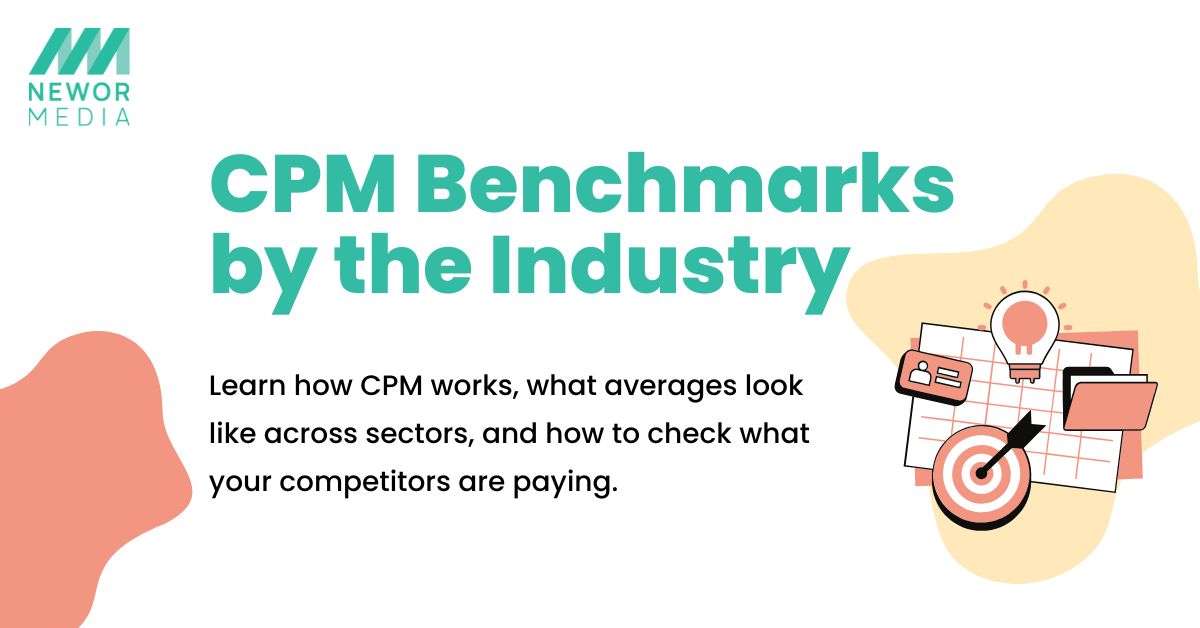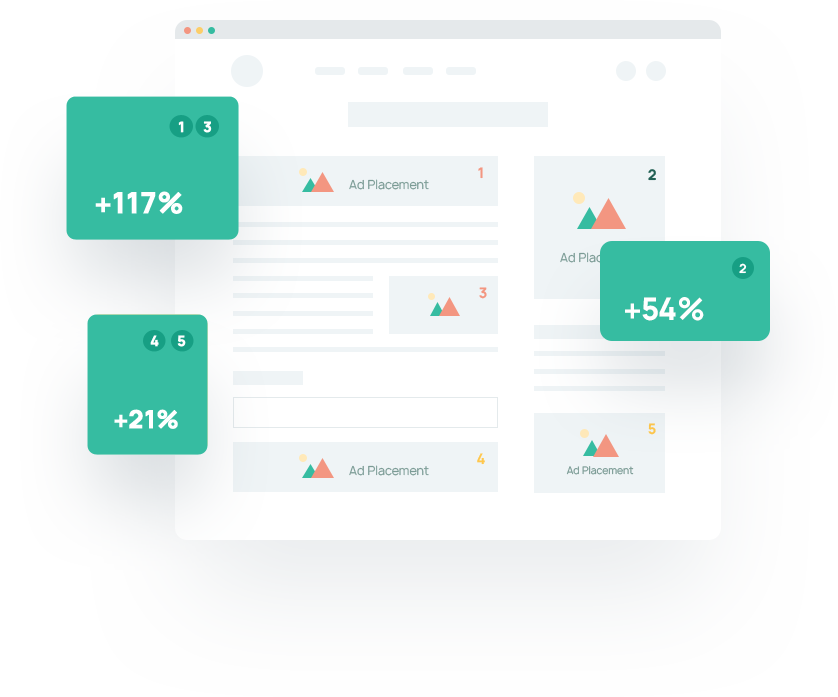CPM is a highly used metric in advertising and for valid reasons. Irrespective of Ad formats like display ads, video campaigns, or programmatic ads, CPM gives you a brief idea of the amount you are spending for brand awareness and exposure.
But that number doesn’t mean much in isolation. A $12 CPM could be great for one campaign and terrible for another, it all depends on your industry, audience, and ad type.
In this blog, we’ll break down what CPM actually means, how to benchmark it by industry and ad type, and how you can get a read on what your competitors might be spending.
A Quick Recap: What Is CPM?
Simply put, CPM is an abbreviation for Cost Per Mille, or cost per 1,000 impressions. If you are paying $10 every time your ad is shown a thousand times, it means that your CPM is $10.
CPM is highly effective when your marketing aim is visibility. It’s often the go-to metric for:
- Brand awareness campaigns
- Content distribution
- Event launches
- Retargeting
However, it is important to keep in mind that CPM tells you how much exposure you’re getting, not how effective it is. That’s why benchmarking matters.
Why CPM Benchmarking Matters
Your CPM shouldn’t be judged in a vacuum. Different industries have different norms, and what’s “expensive” for one might be totally reasonable for another.
Benchmarking helps you:
- Set realistic expectations before launching a campaign
- Spot red flags (like overpaying for low-value impressions)
- Communicate performance to stakeholders with context
If you’re working in finance or legal, for example, you’re likely going to see higher CPMs than someone in travel or lifestyle. Why? Because the value of a lead, and the competition for eyeballs is just higher.
CPM Benchmarks by Industry (Estimated Ranges)
Let’s look at some typical CPM ranges across key industries. Keep in mind: these are broad estimates, and real numbers can vary by region, targeting, and platform.
| Industry | Average CPM Range |
| Finance & Insurance | $20 – $45 |
| Tech & SaaS | $15 – $40 |
| Healthcare | $15 – $35 |
| Education | $10 – $25 |
| Retail & eCommerce | $5 – $15 |
| Travel & Tourism | $4 – $12 |
| Media & Entertainment | $6 – $14 |
| Real Estate | $12 – $30 |
You are paying a premium to reach a high intent audience in B2B finance and software sectors, and that’s okay, if the rest of your funnel supports that value.
CPM Benchmarks by Ad Type
Beyond industry, the format of your ad also impacts CPM. Video tends to cost more than display, but it also offers higher engagement in many cases. Here’s a breakdown:
| Ad Type | Average CPM Range |
| Display Ads | $2 – $10 |
| Native Ads | $5 – $15 |
| Video Ads | $10 – $30 |
| Social Media Ads | $6 – $15 |
| Programmatic Display | $1 – $12 |
| Connected TV (CTV) | $20 – $40 |
If you’re seeing a $30 CPM on a programmatic display ad, it might be time to look under the hood. But the same $30 on a LinkedIn video ad aimed at CFOs? That might actually be right on track.
How to Check Competitor CPMs (Or Get Pretty Close)
Most advertisers don’t publish their CPMs (understandably), but there are a few ways to get a sense of what others in your space are paying.
1. Use Platform Benchmarks
Industry specific CPMs are usually shared by platforms like Facebook, Google Ads, and LinkedIn. They will not be according to your campaign, but they are a great starting point.
2. Third-Party Tools
There are available tools like SEMrush, SpyFu, or Adbeat that help you estimate a competitor’s ad spending and creative strategy. While they will not show the CPM directly, you can calculate it from impressions and spend.
3. Run a Test Campaign
To understand CPM, it is good if you can run a small test ad campaign with precise targeting. It will give you a quick benchmark on the basis of actual audience data.
4. Talk to Your Ad Rep
If you’re working with a rep on Google, LinkedIn, or a programmatic DSP, they can often share industry CPM trends specific to your vertical.
Interpreting Your CPM (Without Overreacting)
If your CPM is higher than the averages above, don’t panic. Higher CPMs might mean you’re targeting better-qualified leads, using premium placements, or running on high-value platforms.
What matters more is whether your CPM is driving downstream results like:
- Higher CTRs
- Better lead quality
- Increased conversions
If your CPM is low and no one is clicking, it’s a red flag. If you are seeing results with a higher CPM, it is working.
Final Thoughts: Make CPM Work For You
CPM is a simple metric on the surface, but it helps you understand reach, cost, and audience quality when studied carefully.
Use benchmarks to set your expectations but don’t run behind low CPMs at the expense of targeting or quality. Focus on the big picture, are your ads being seen by the right people? Are they engaging? Are they leading to action?
If you’re trying to make sense of your ad spend across platforms or industries, Newor Media’s tools and team can help you optimize CPM while keeping your goals front and center.
Let your impressions work smarter, not just cheaper.


2 Comments
Comments are closed